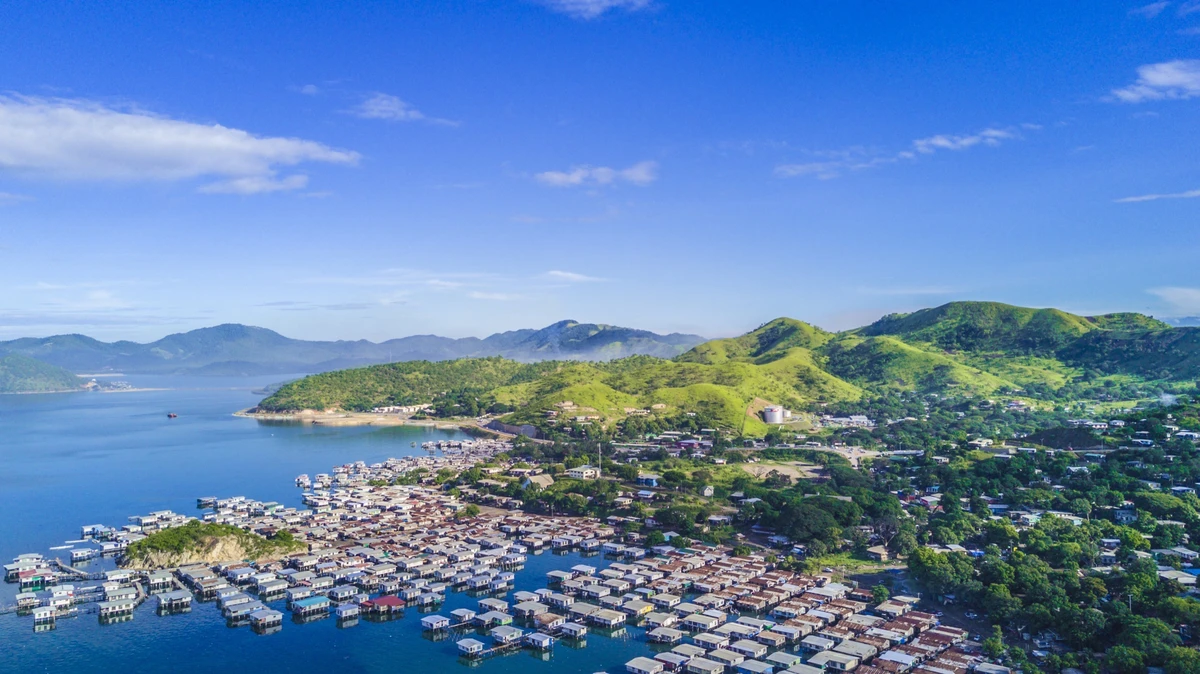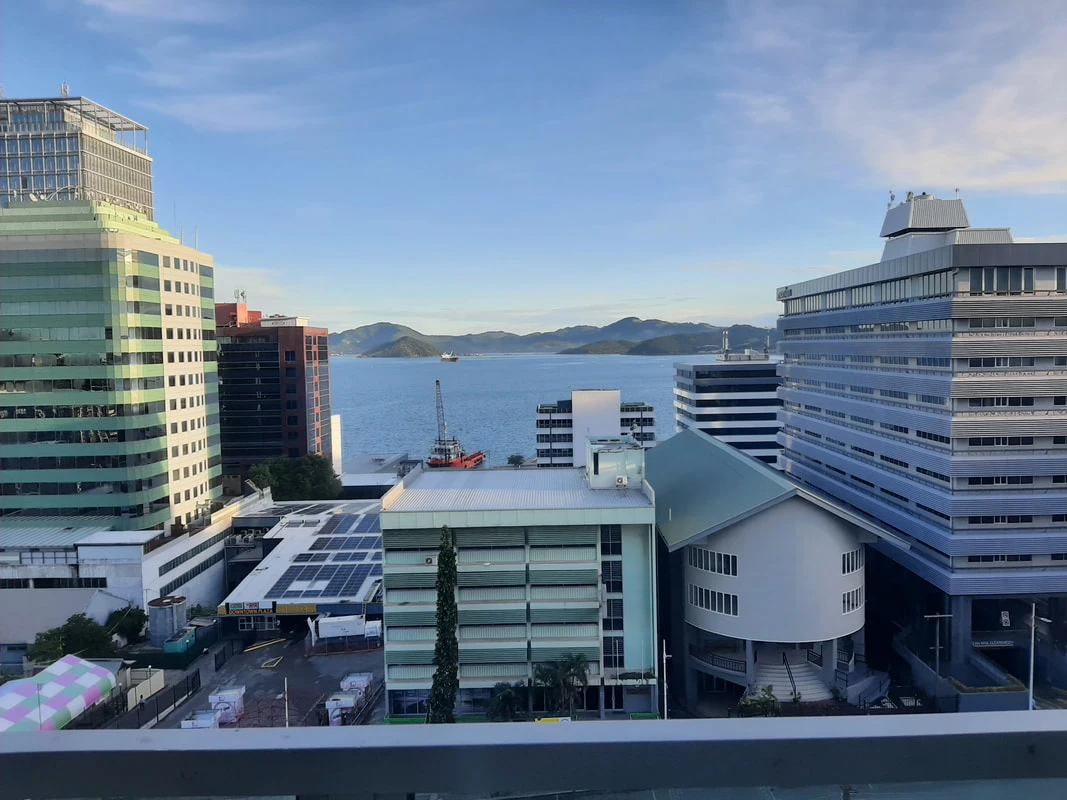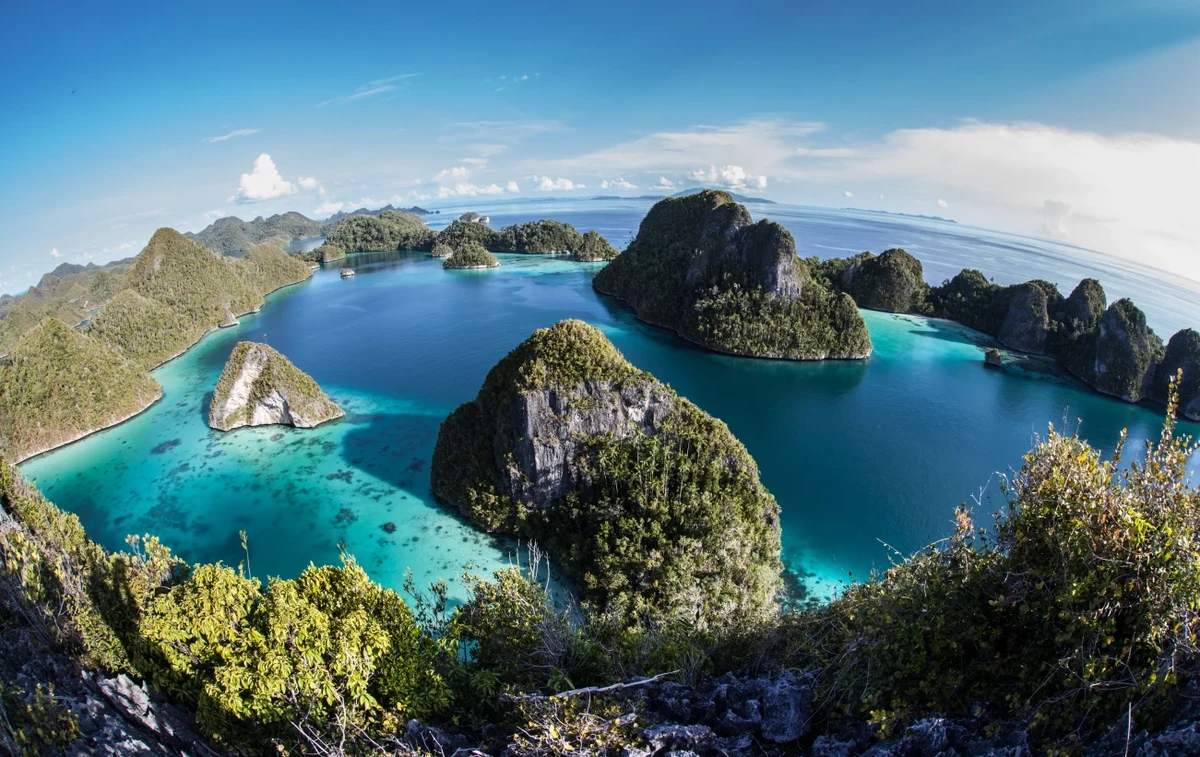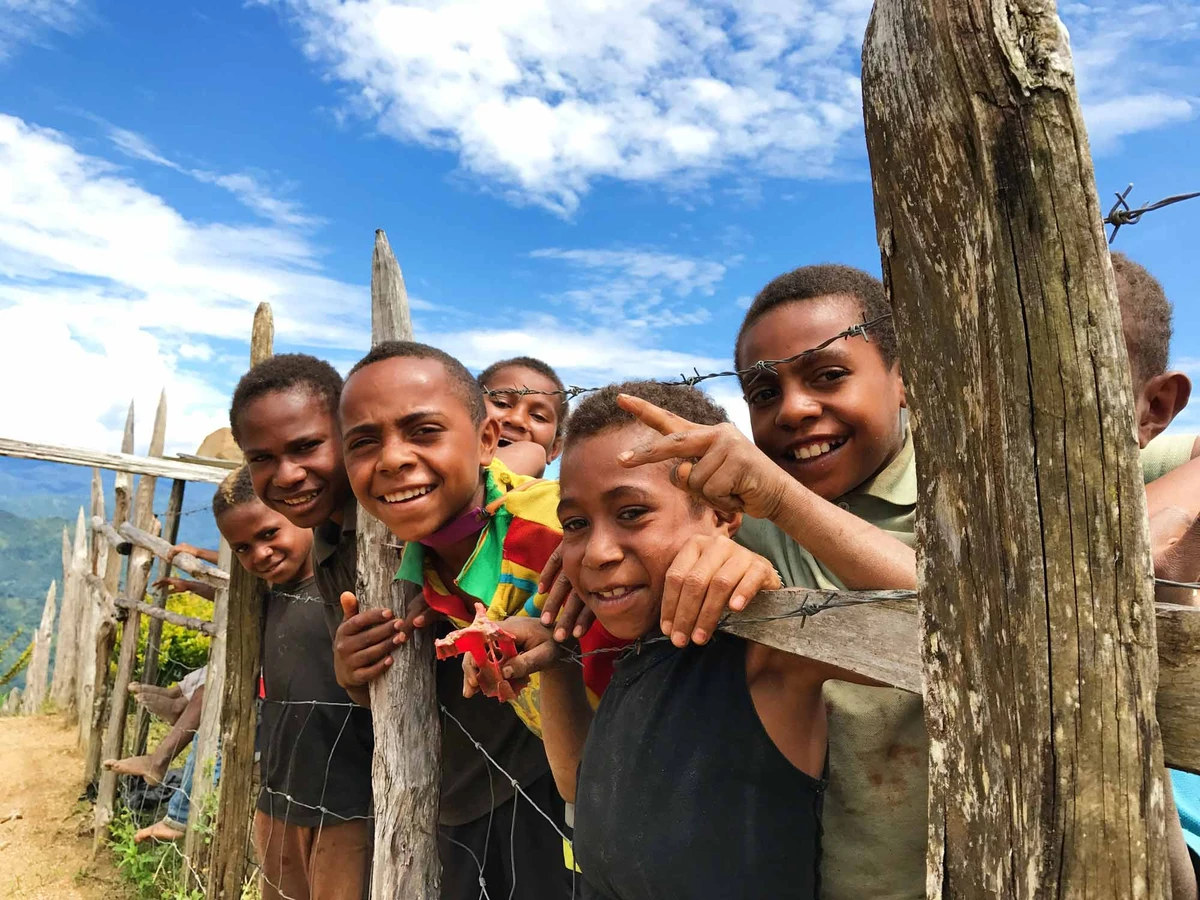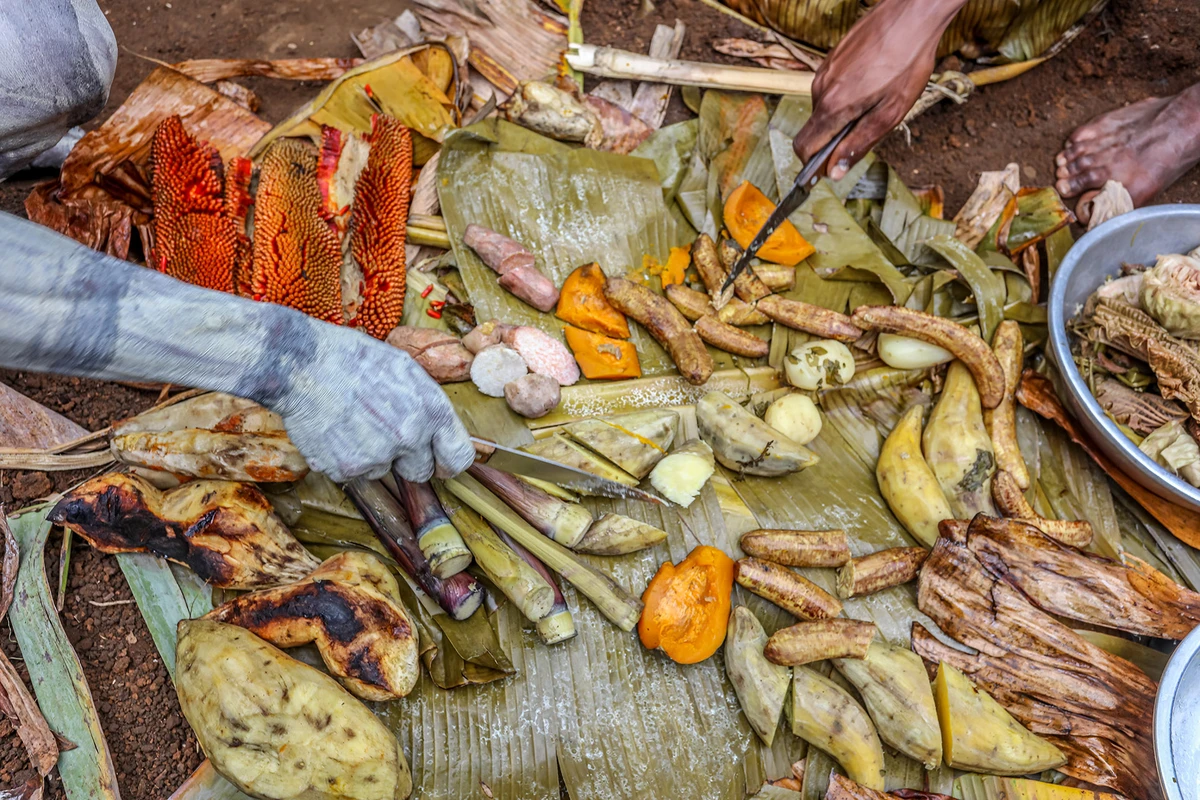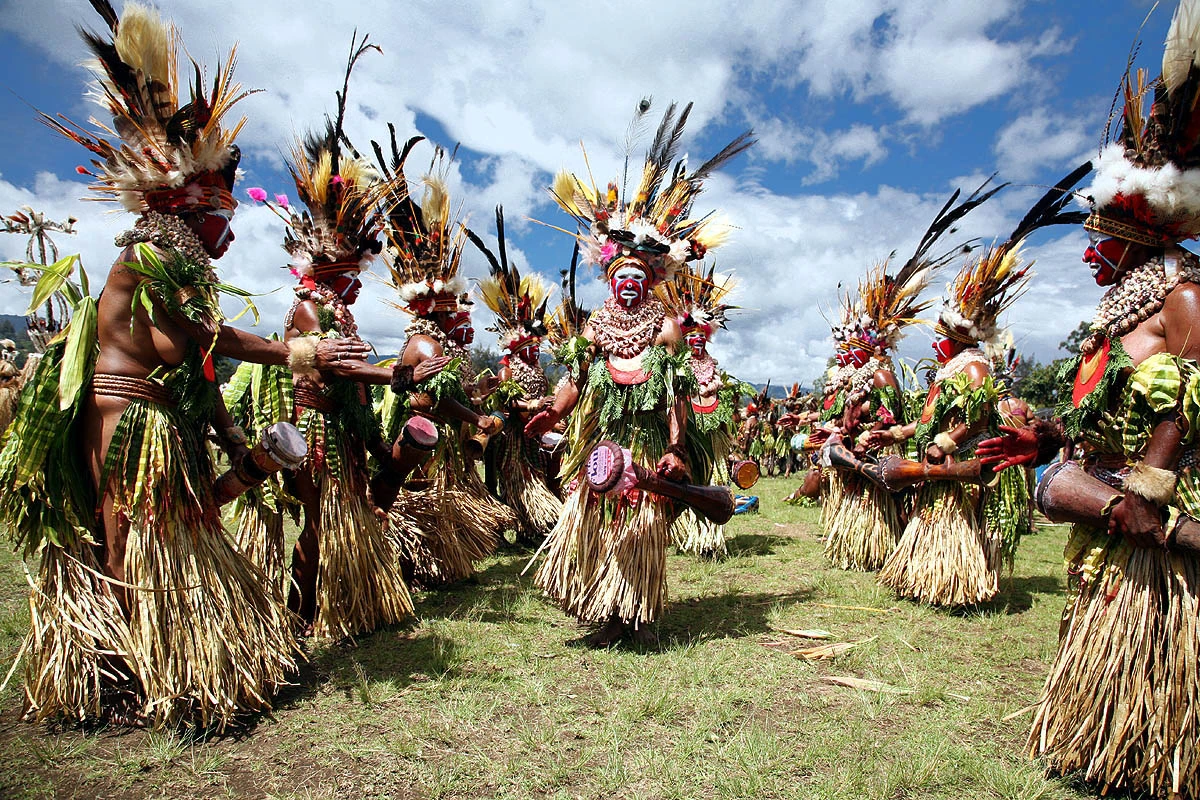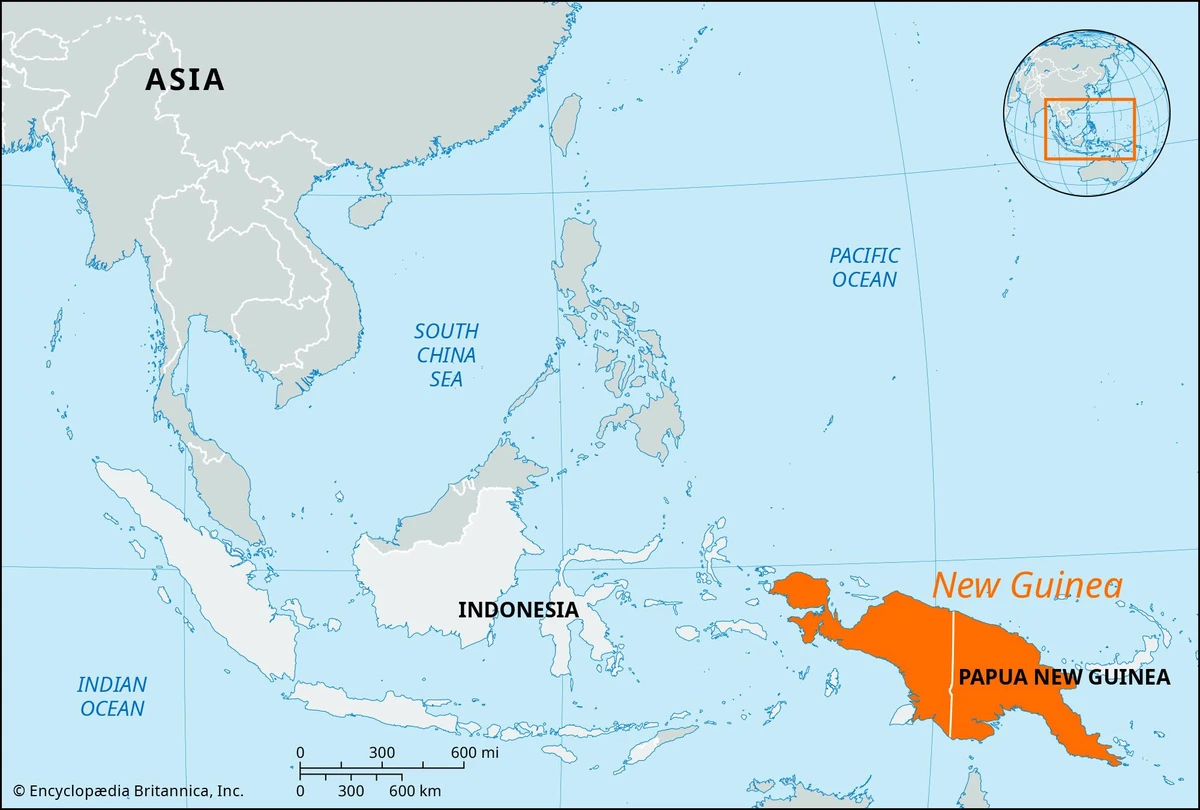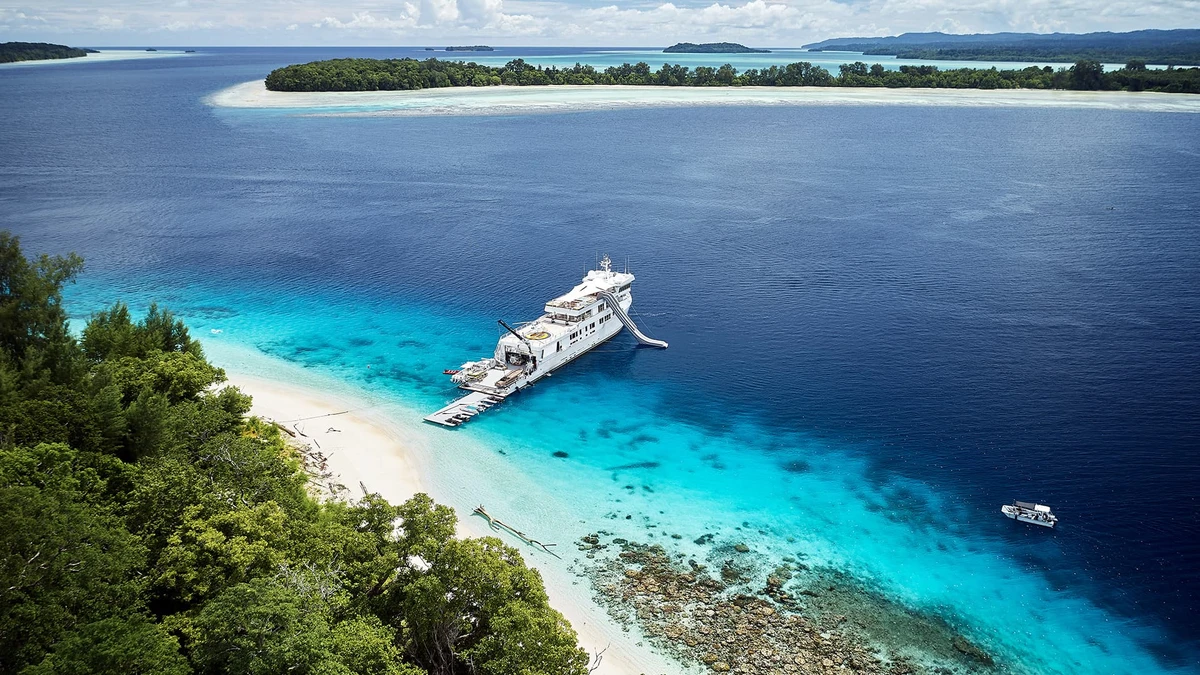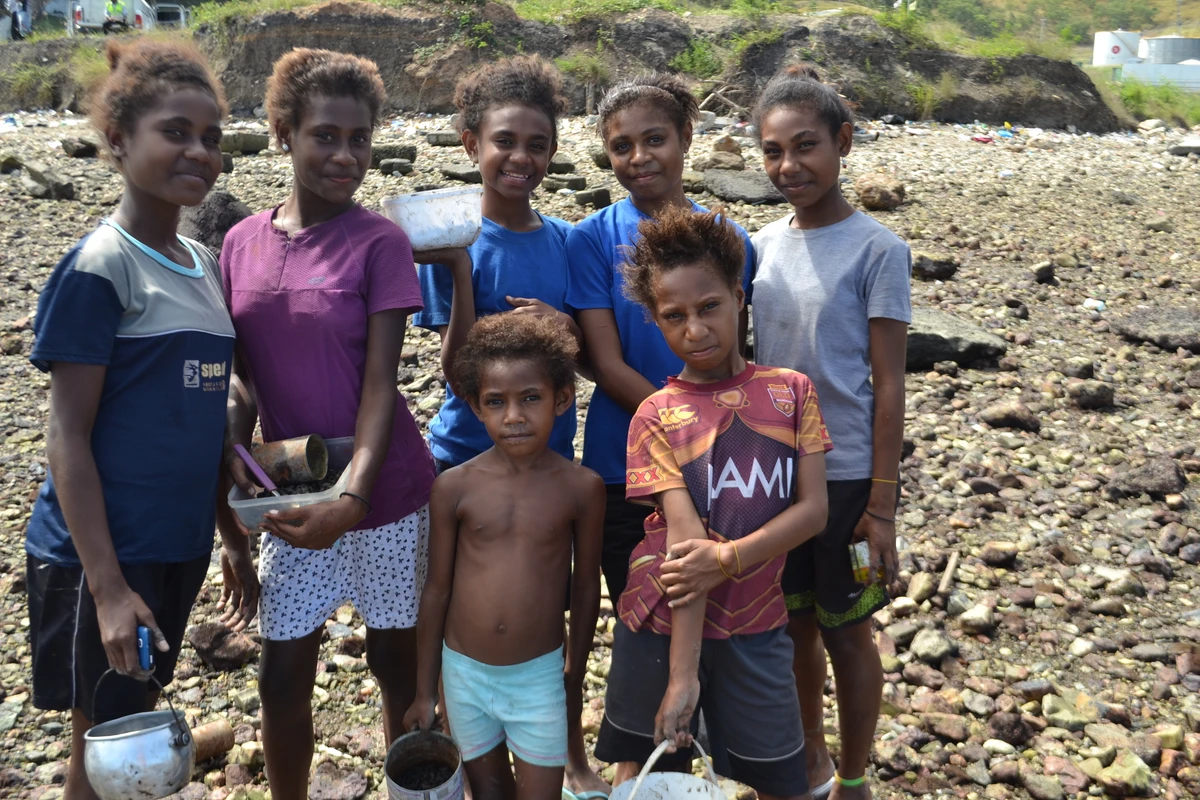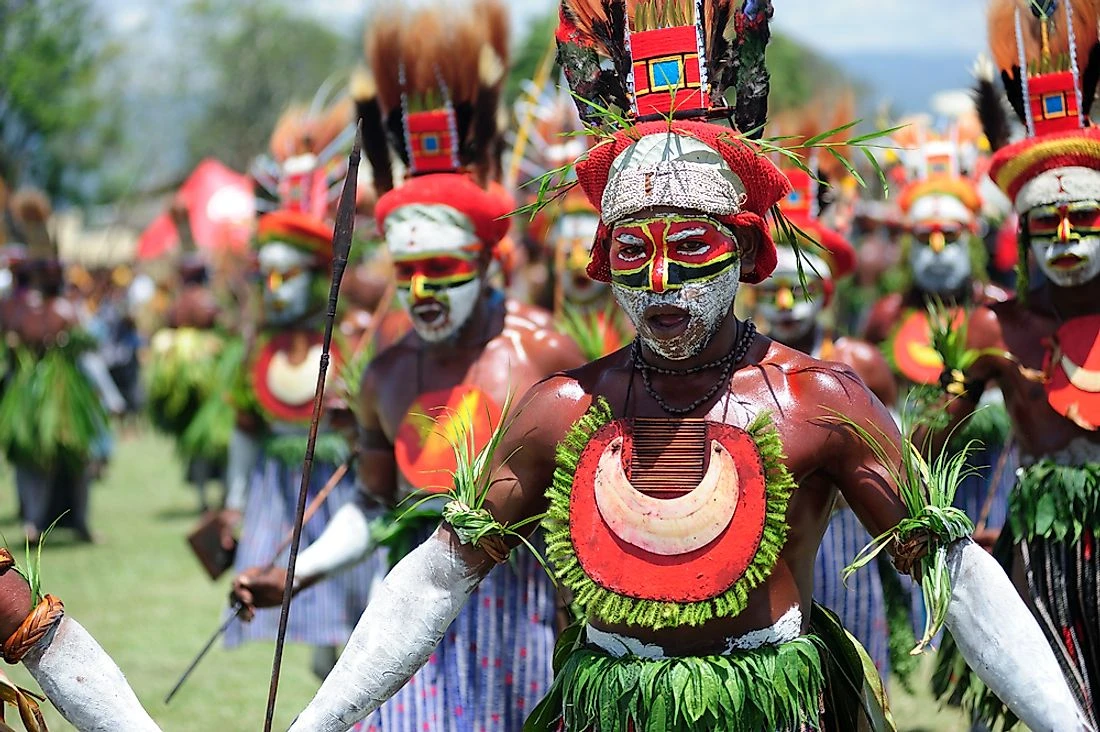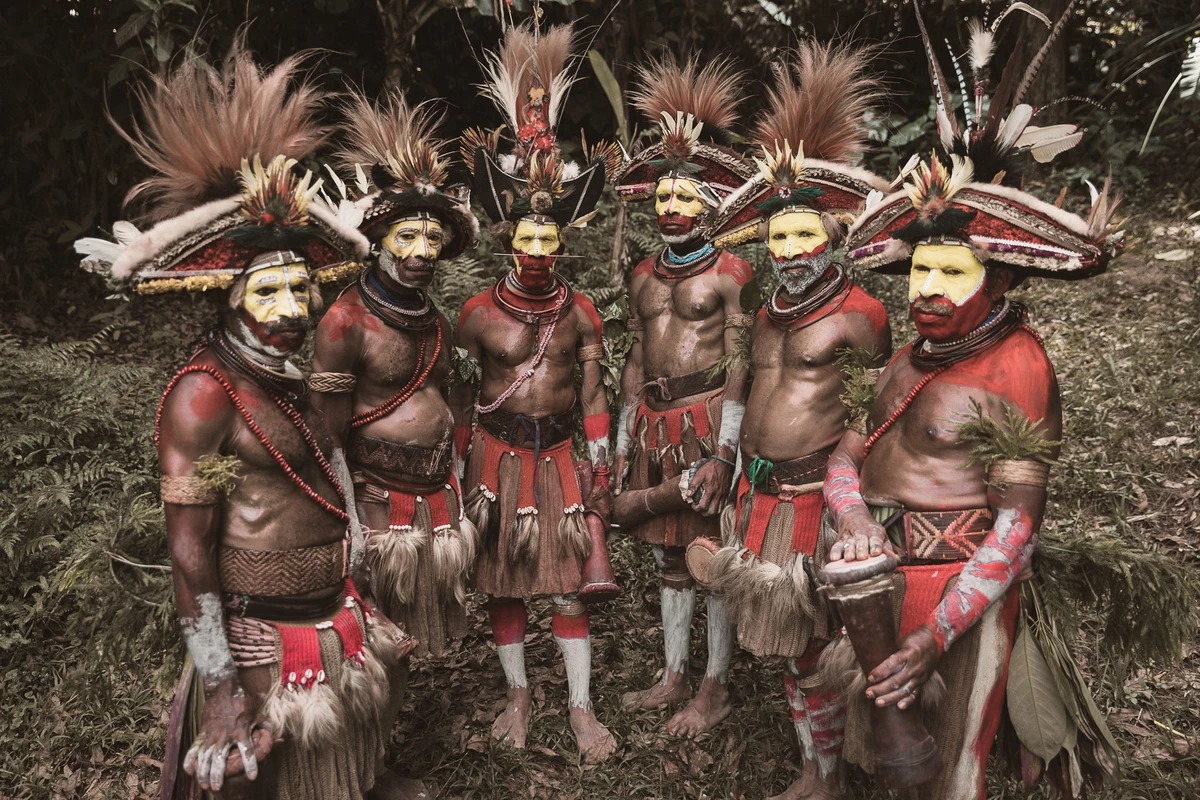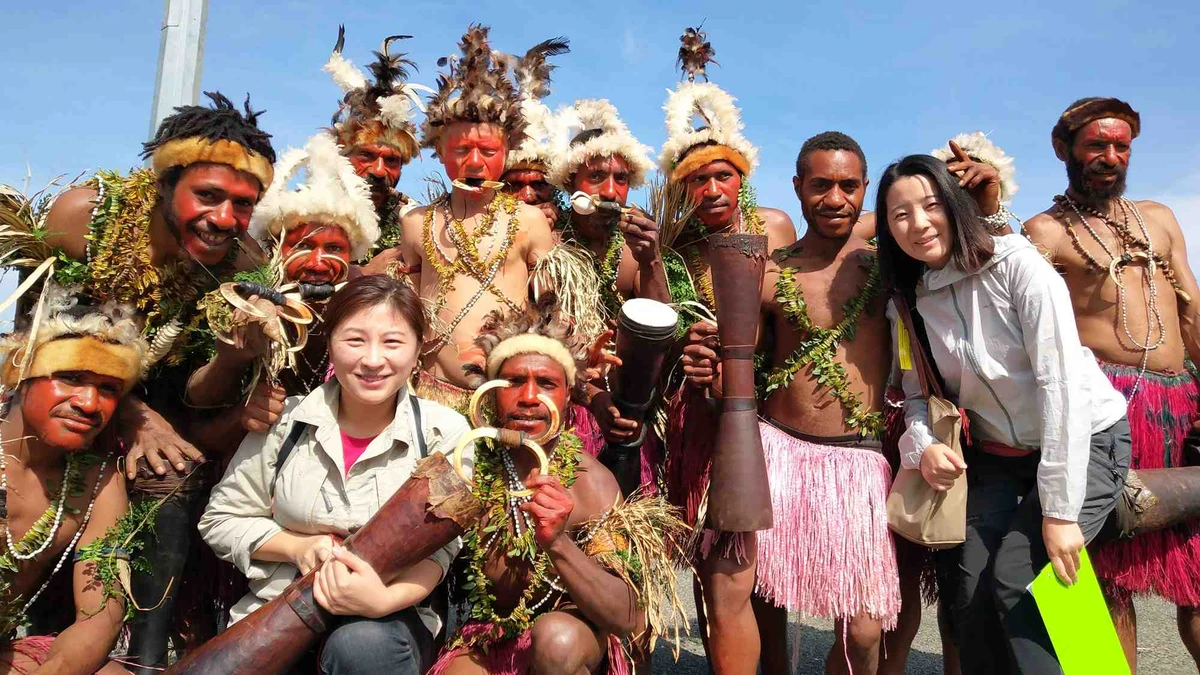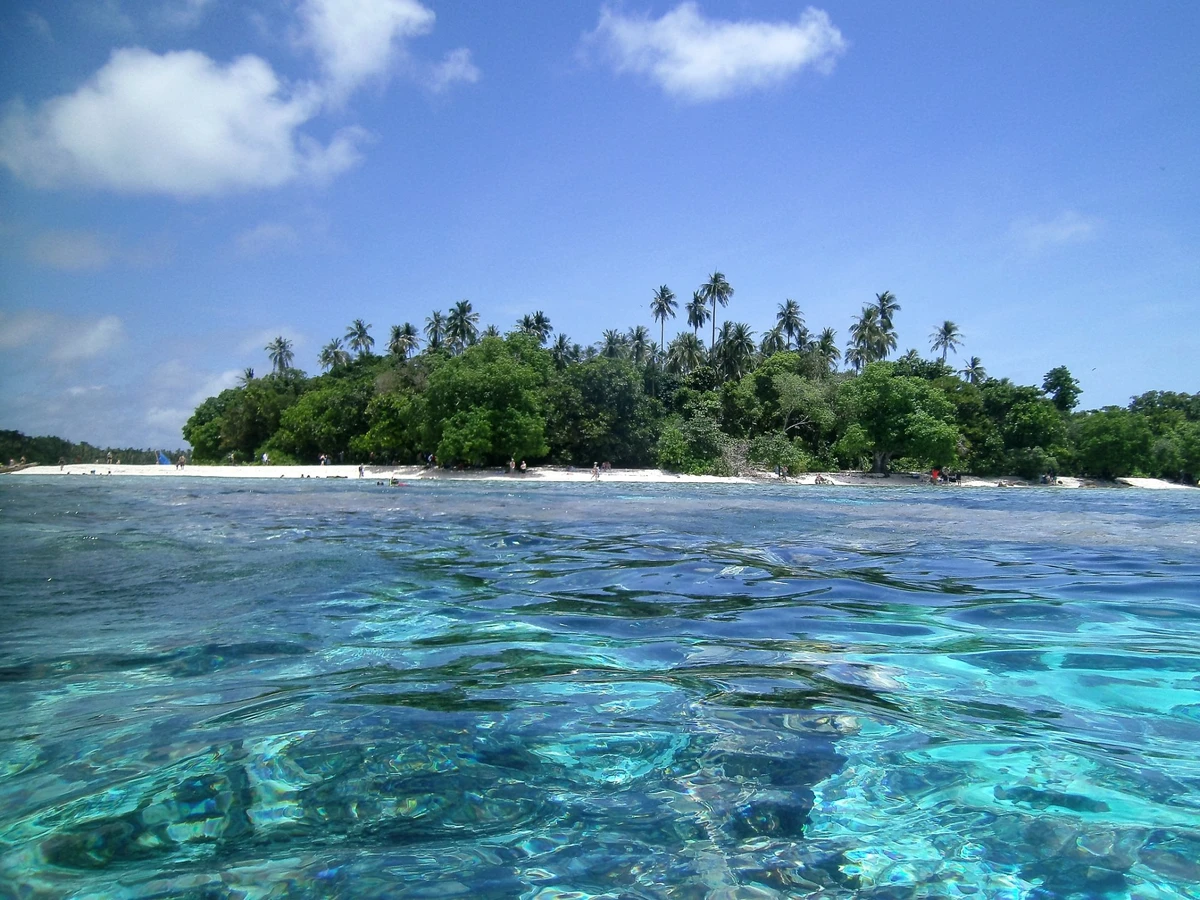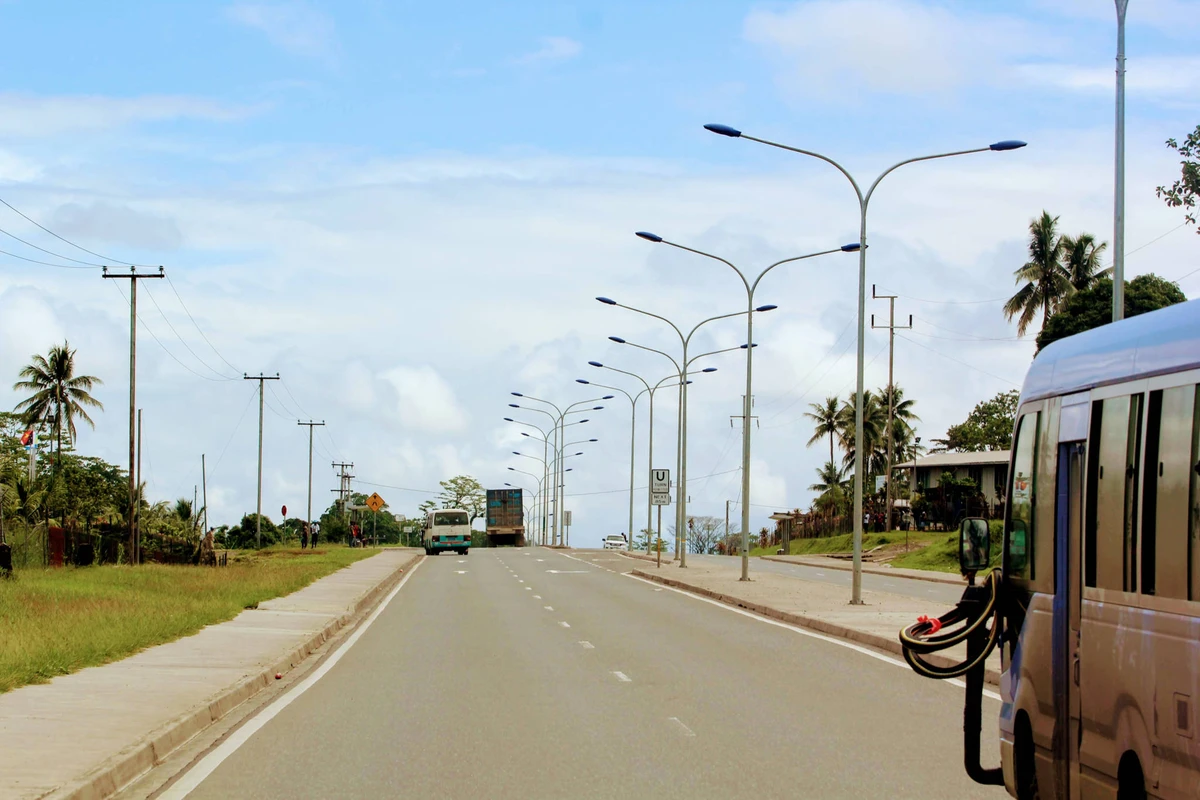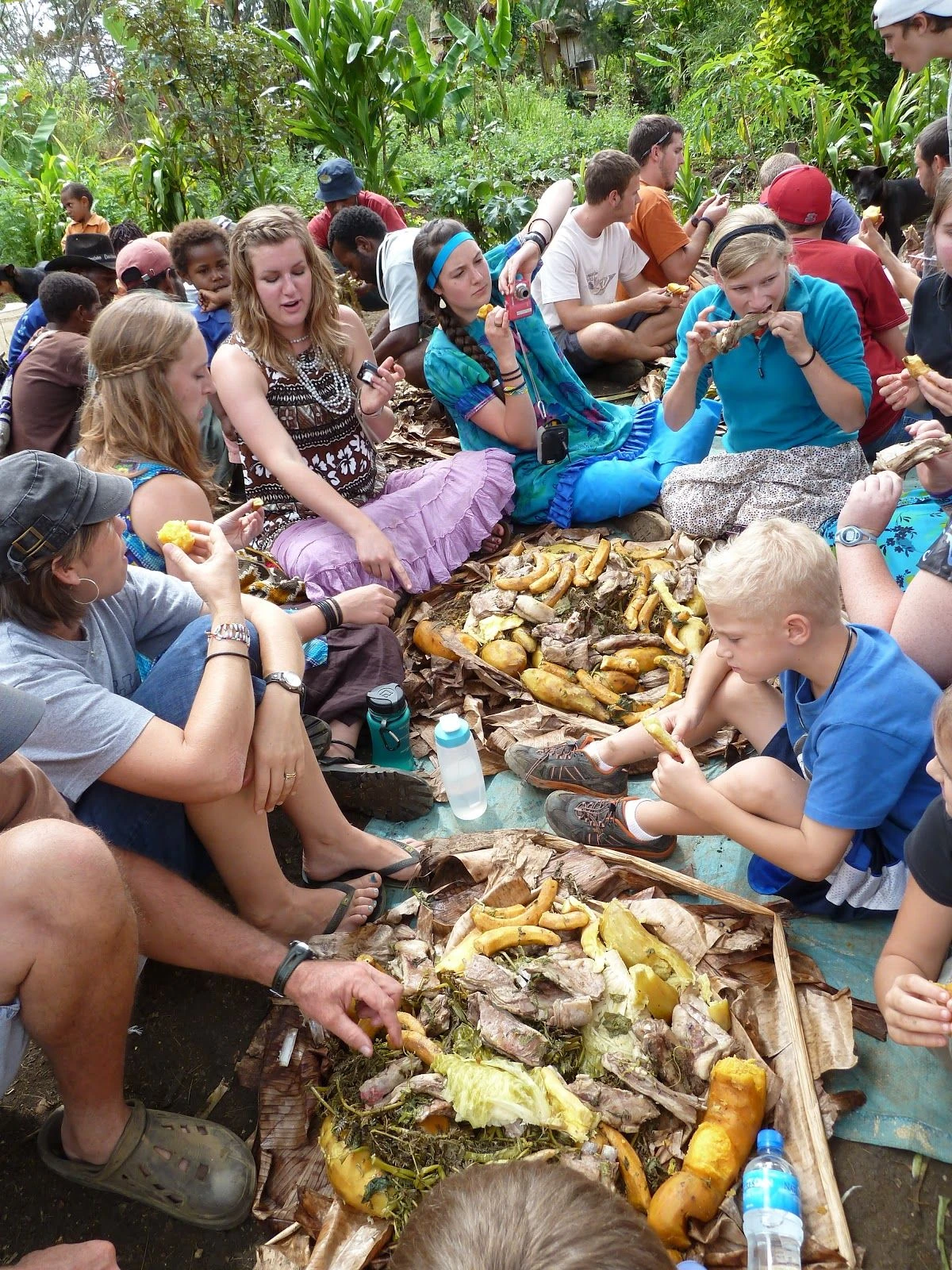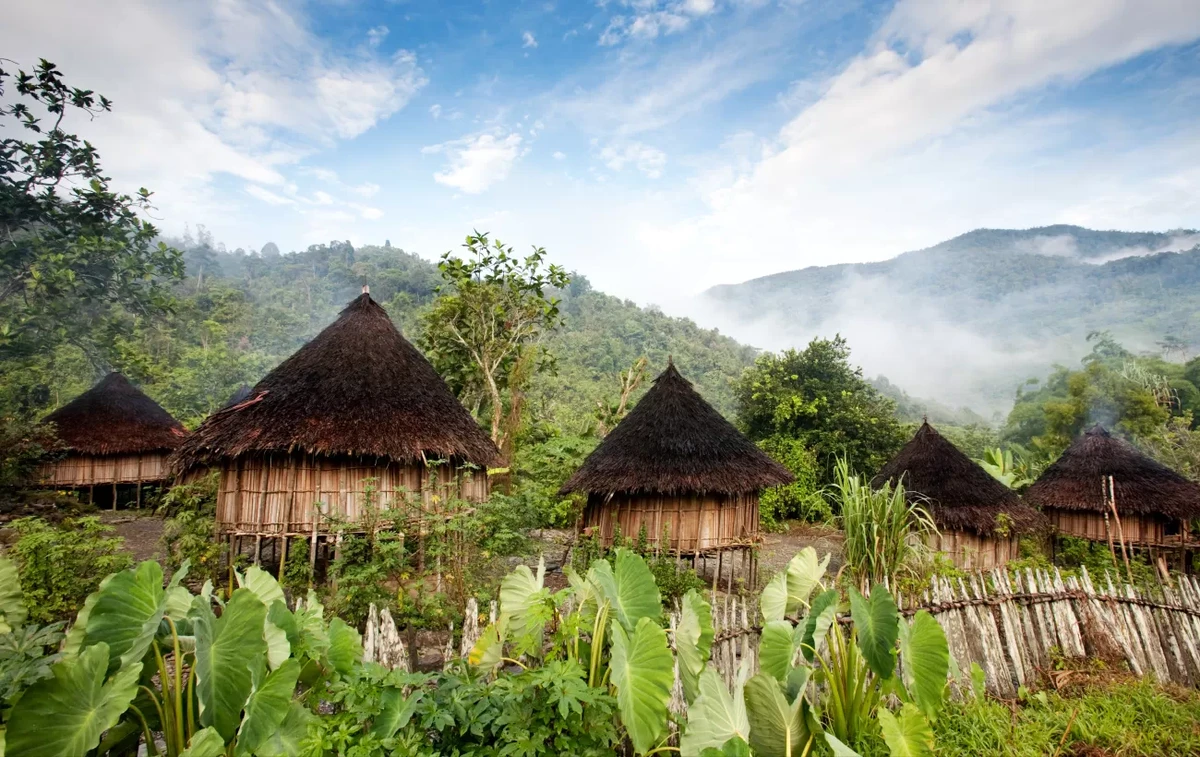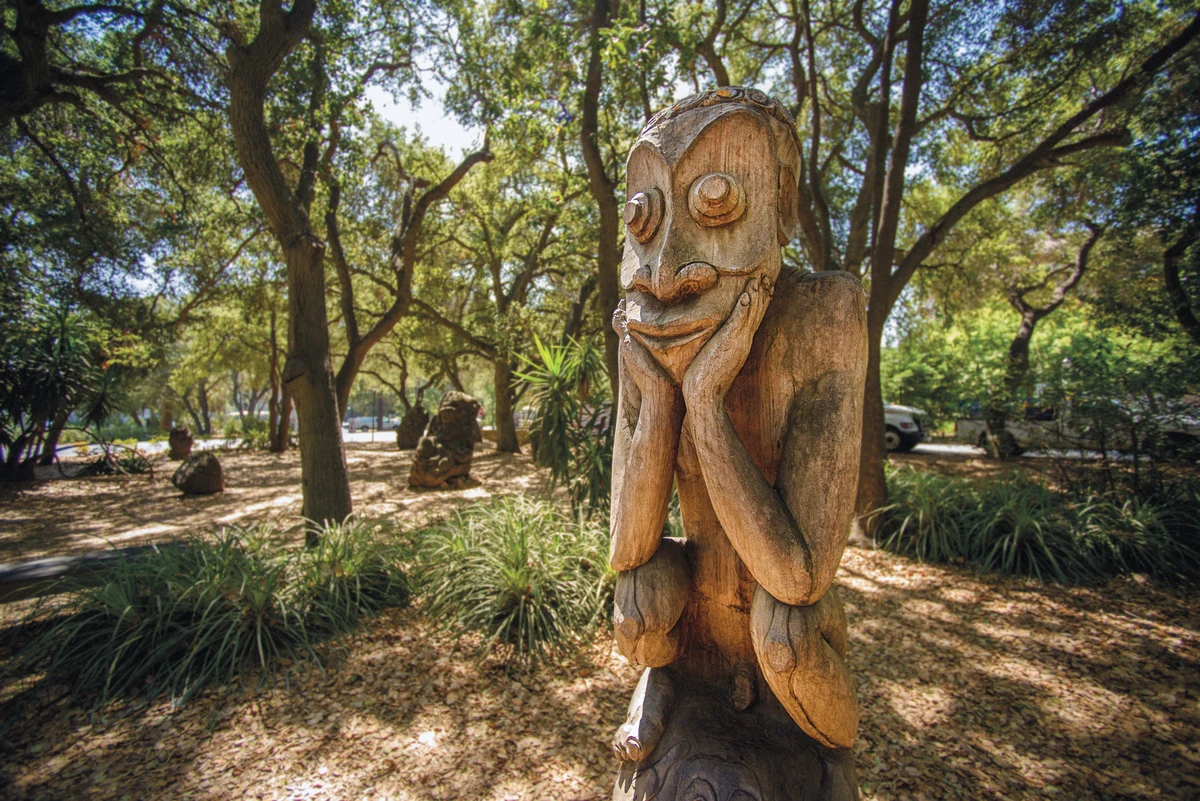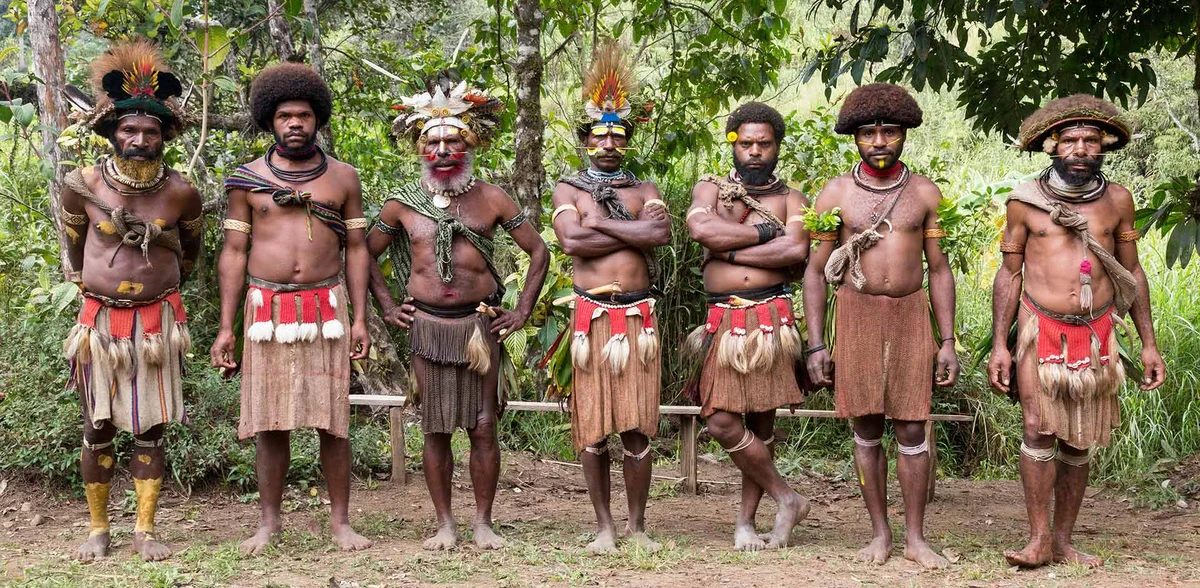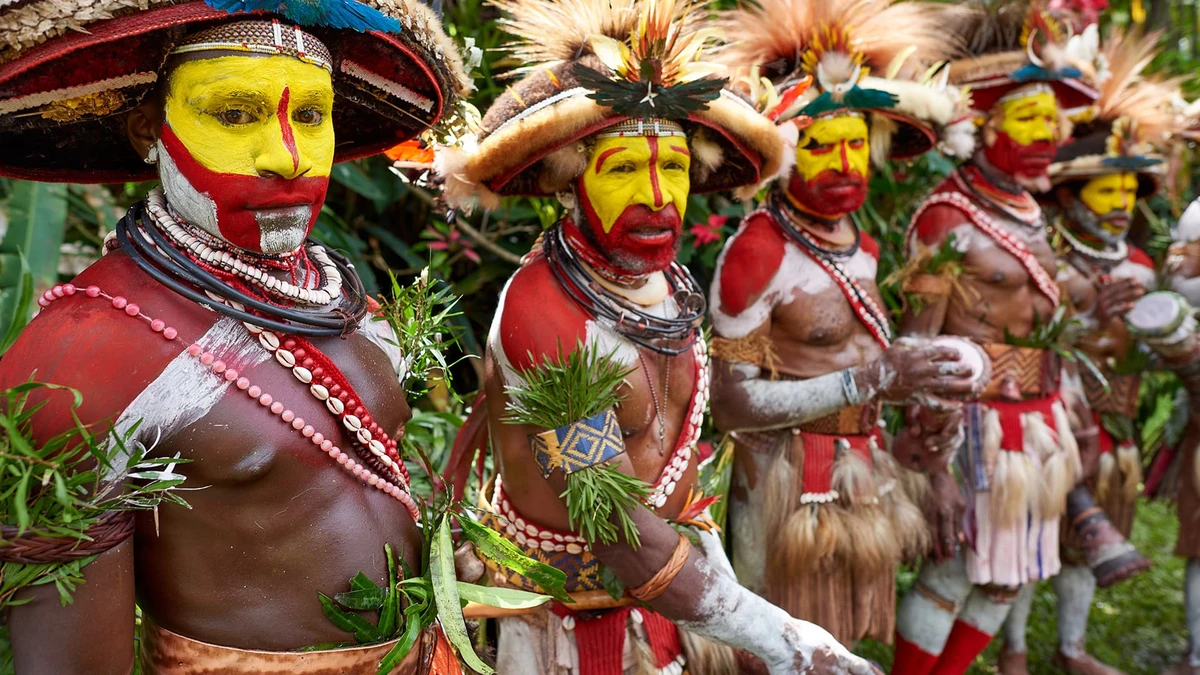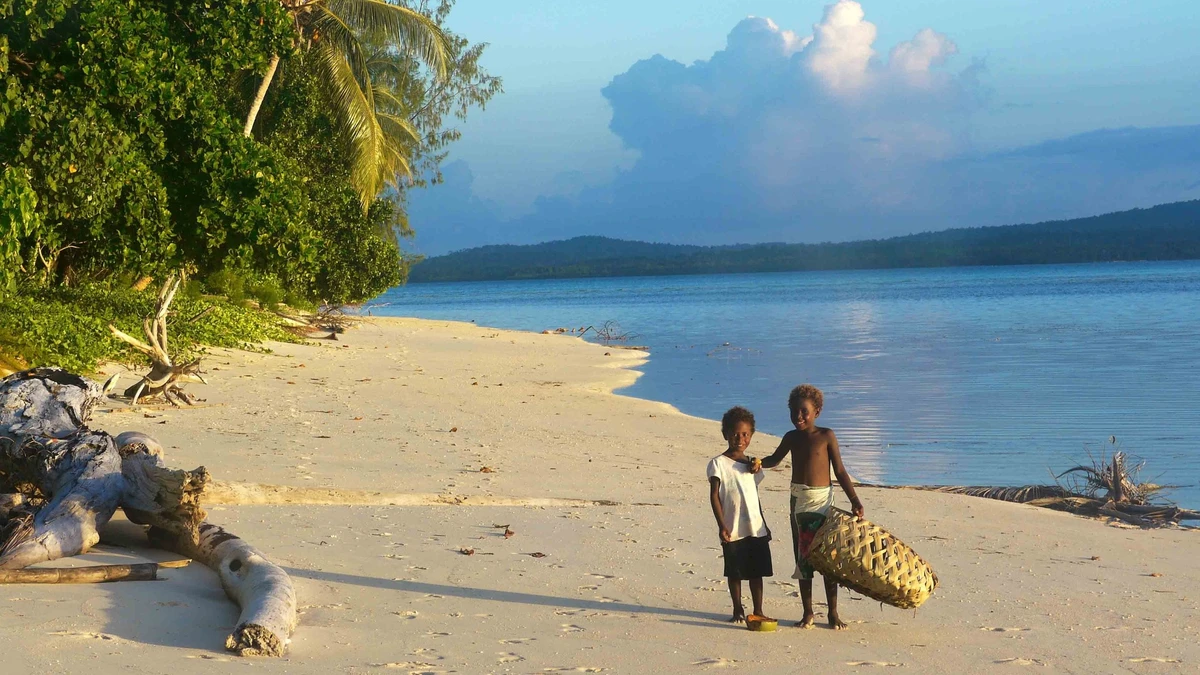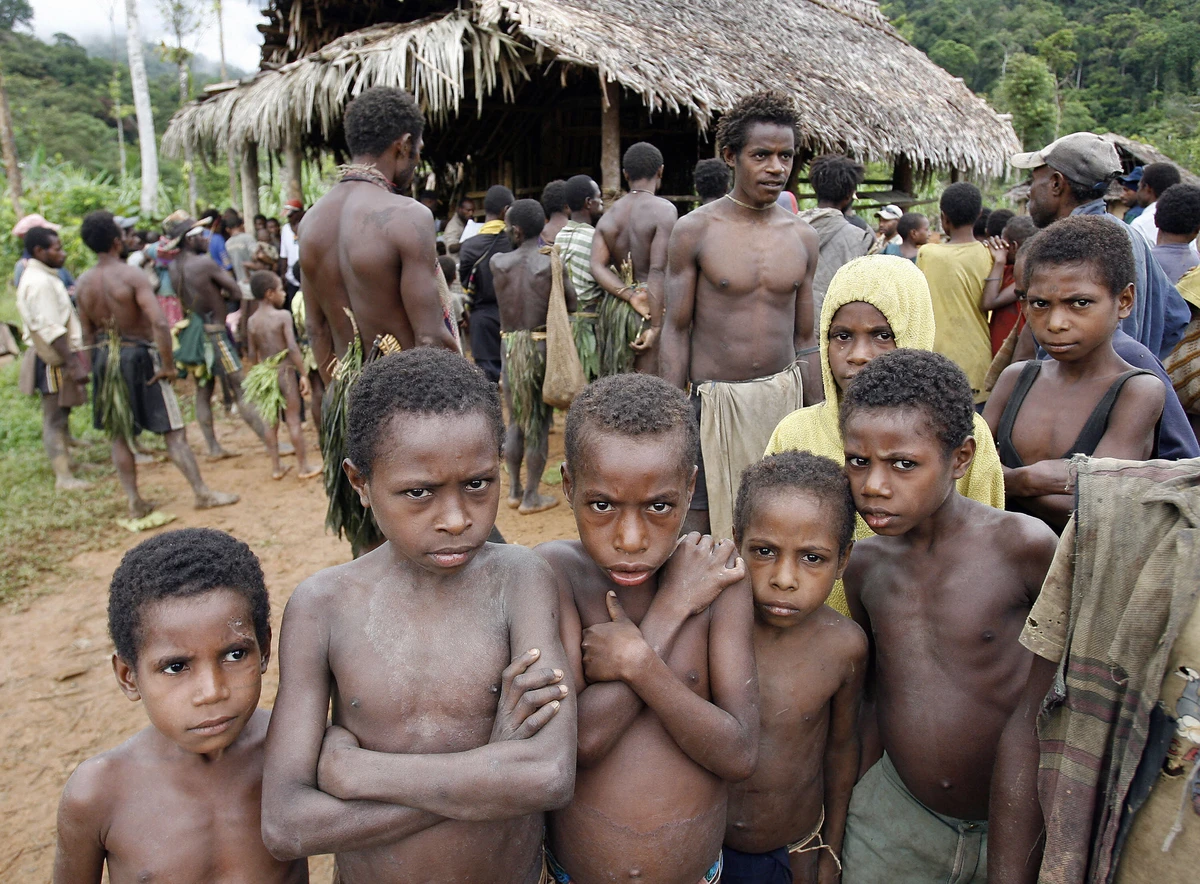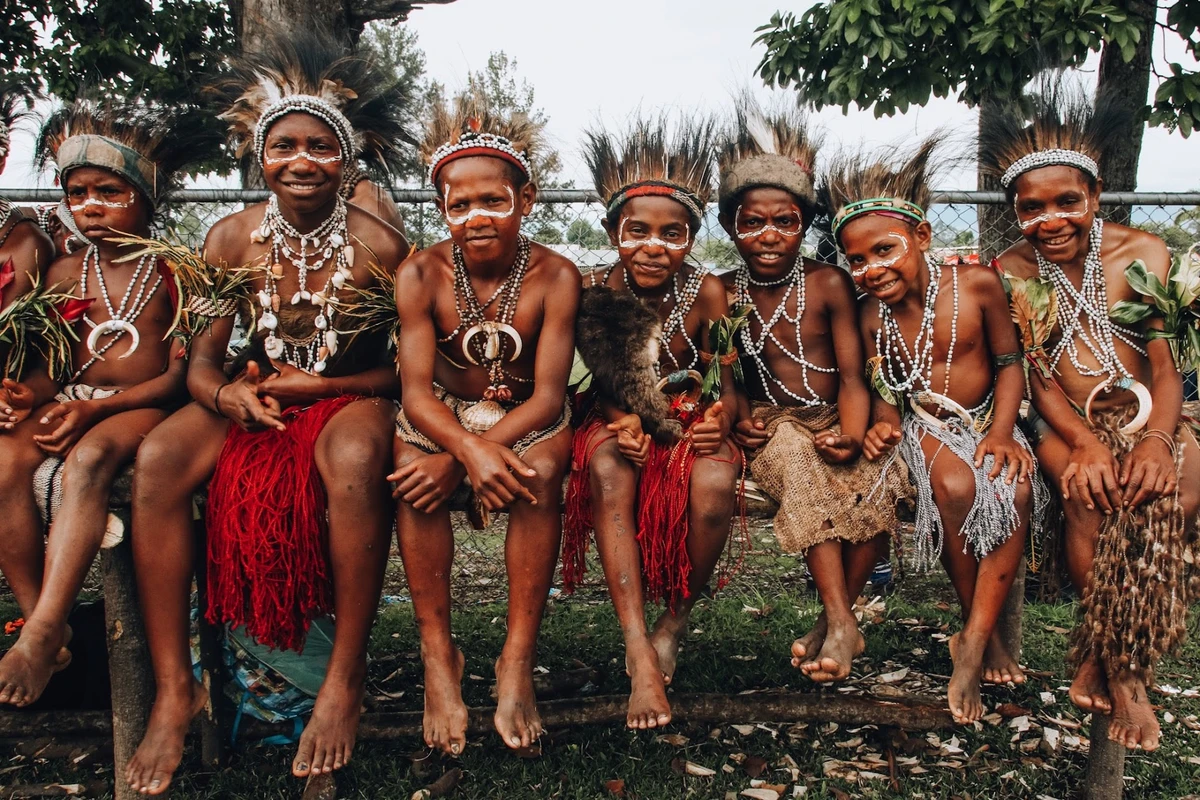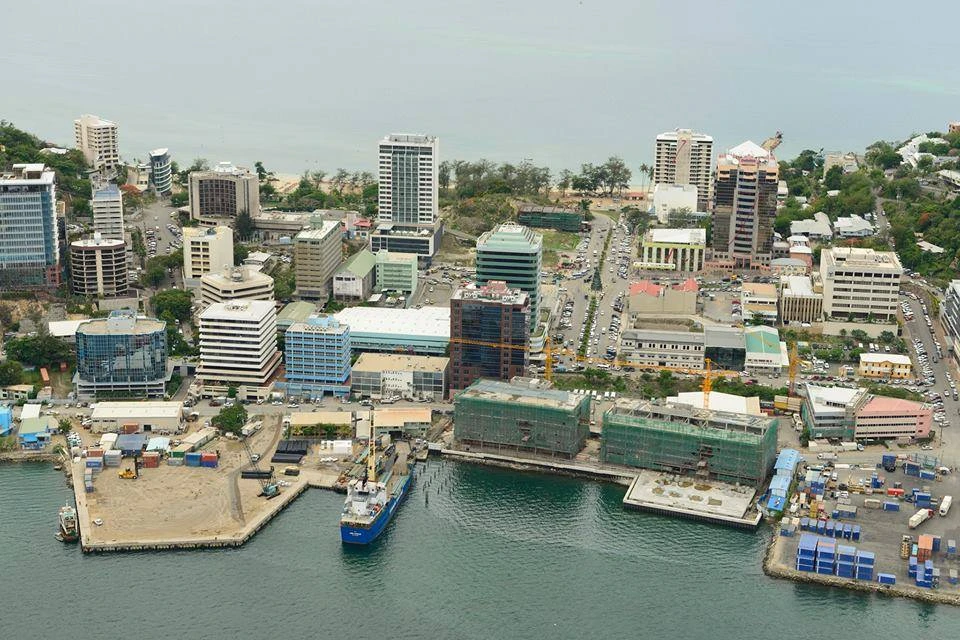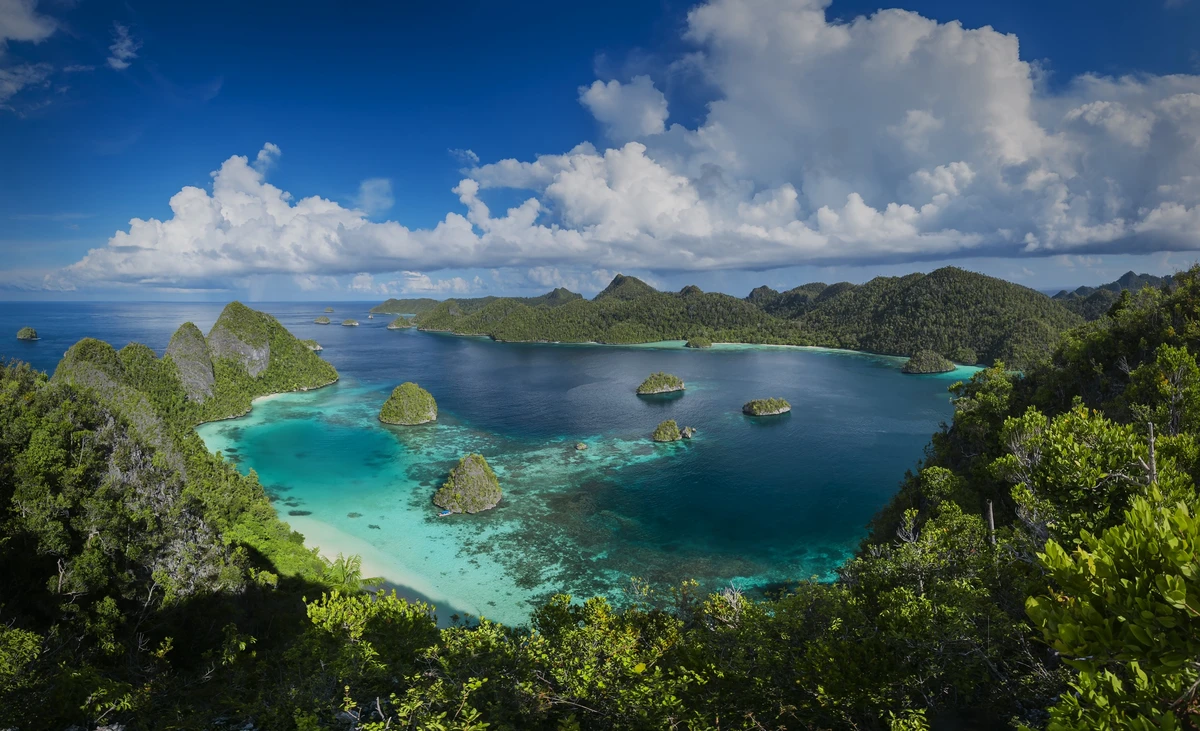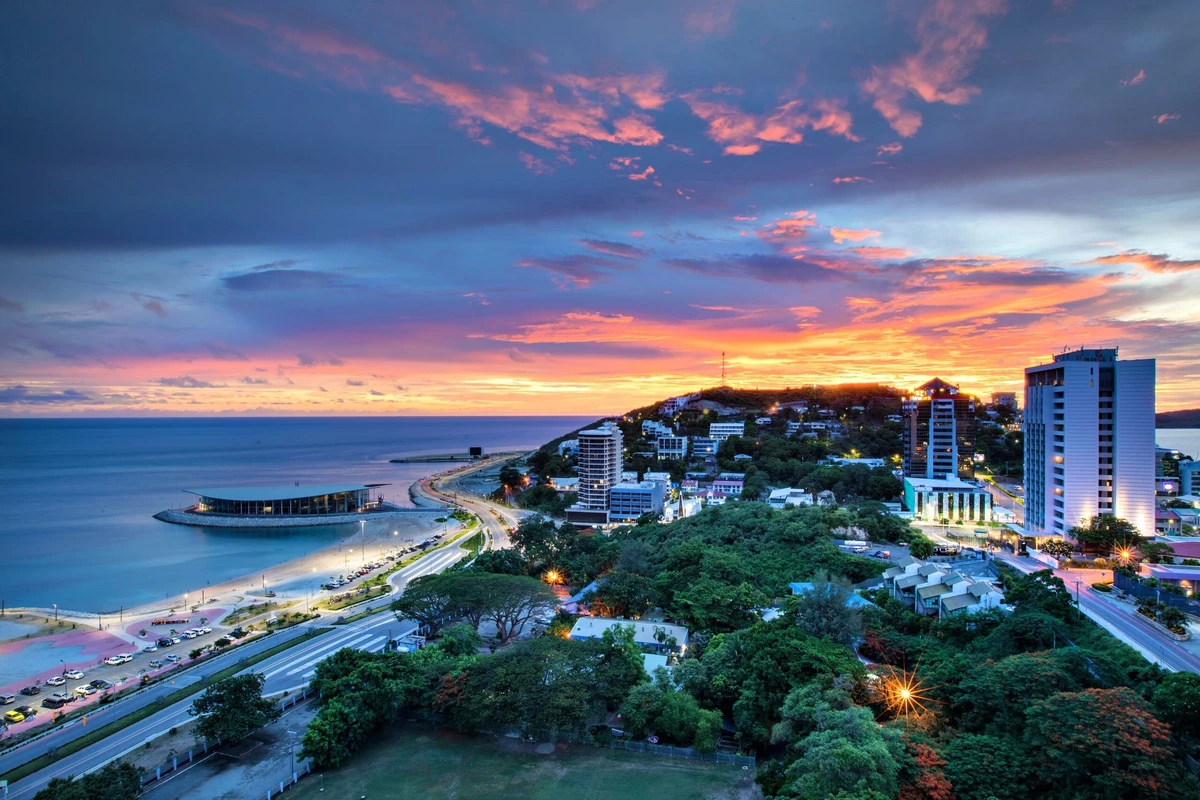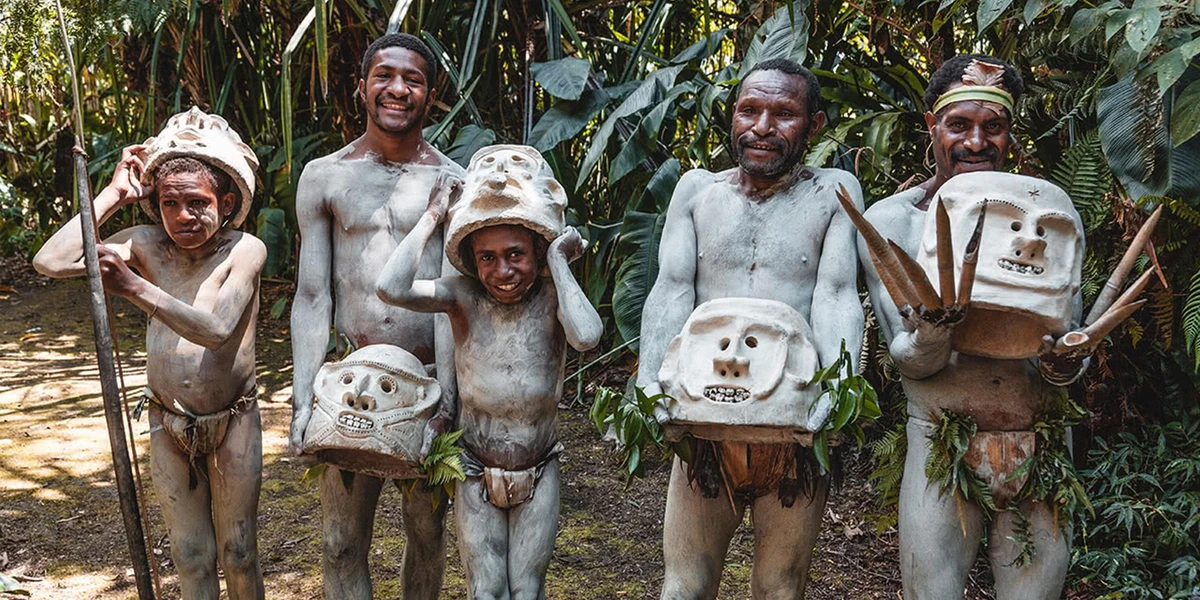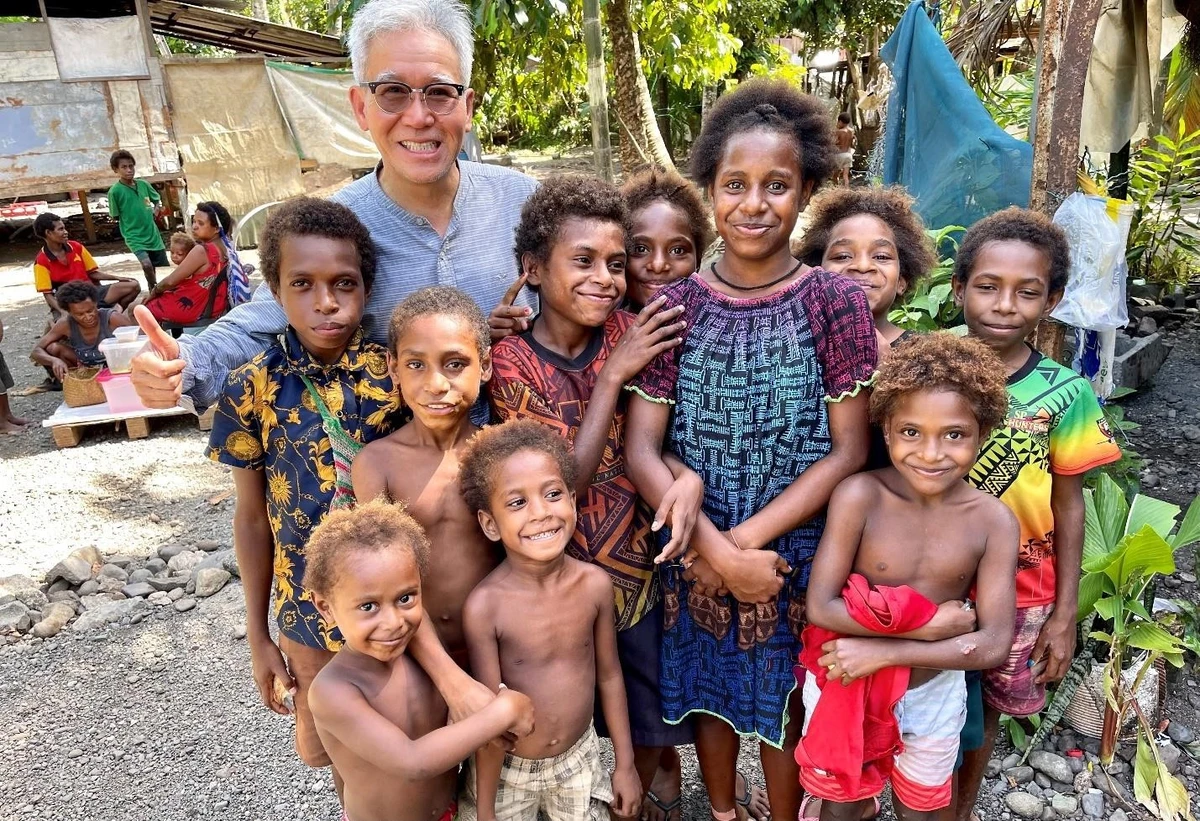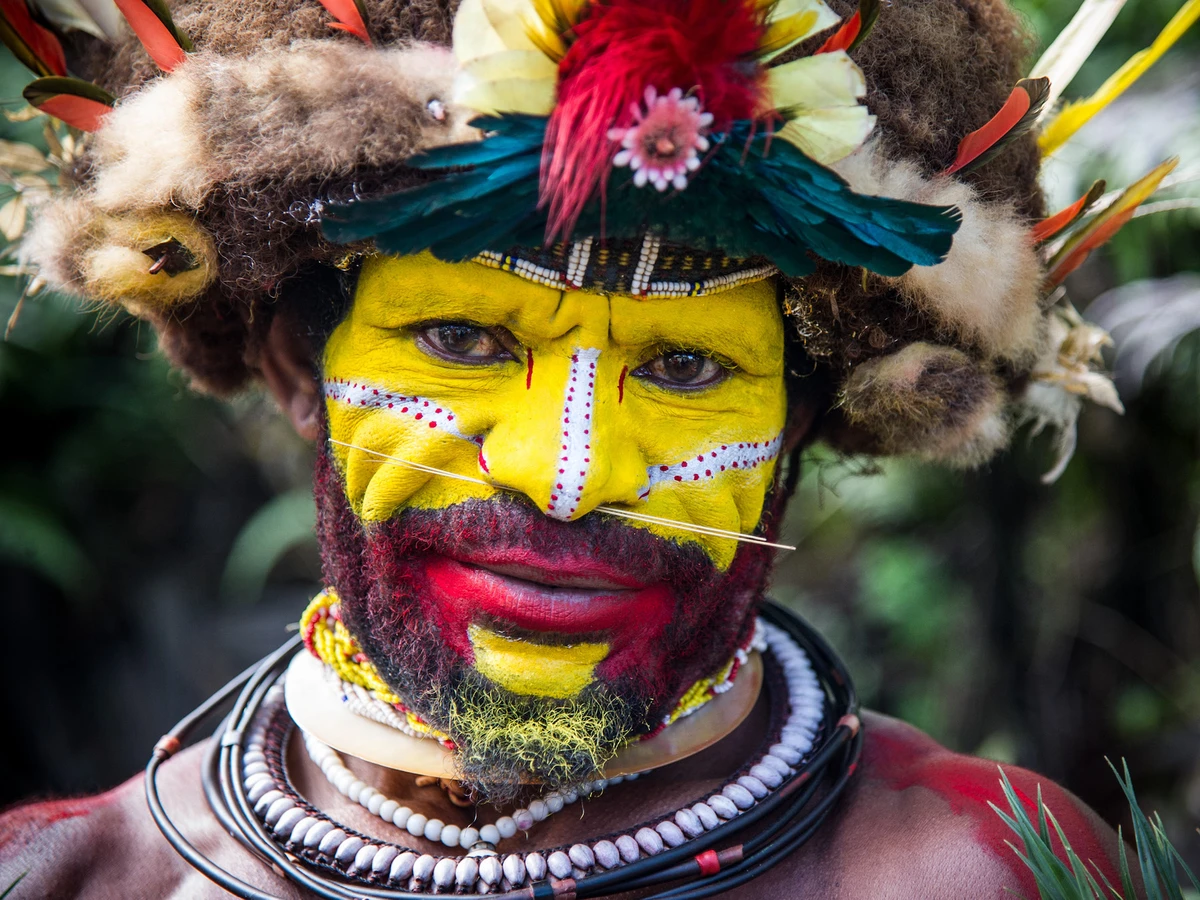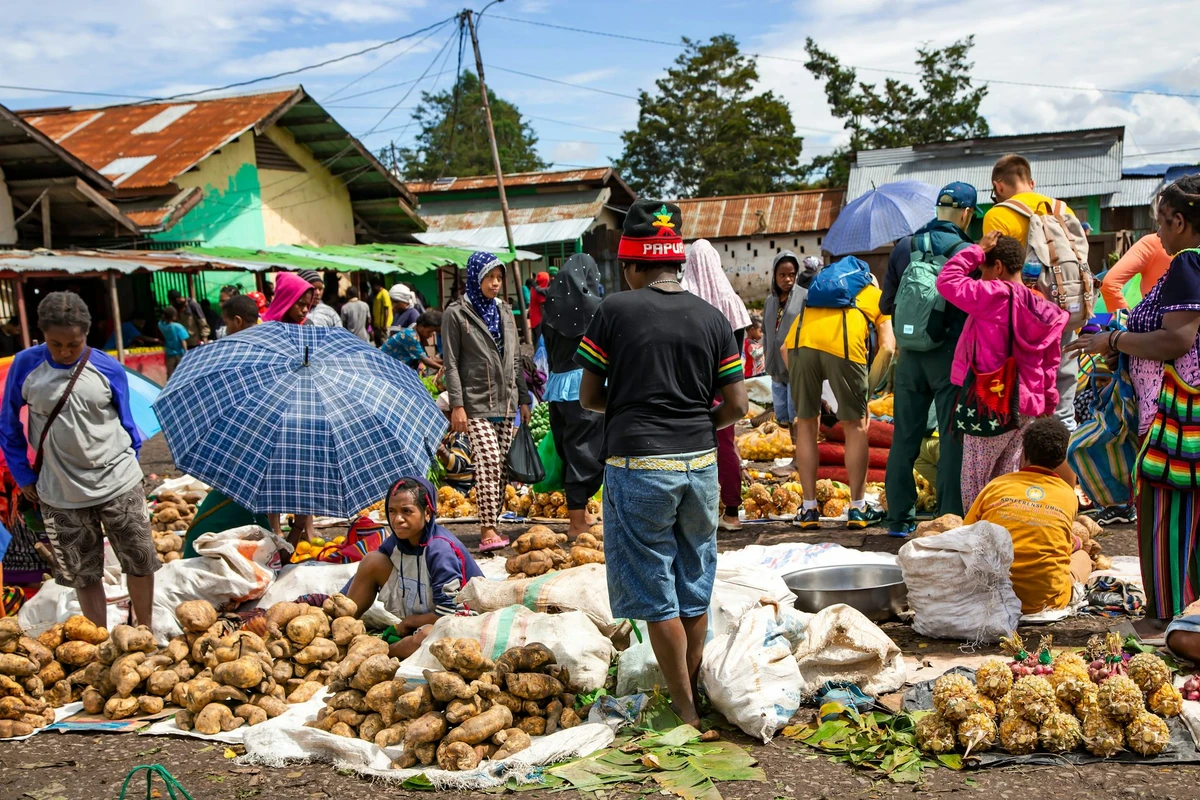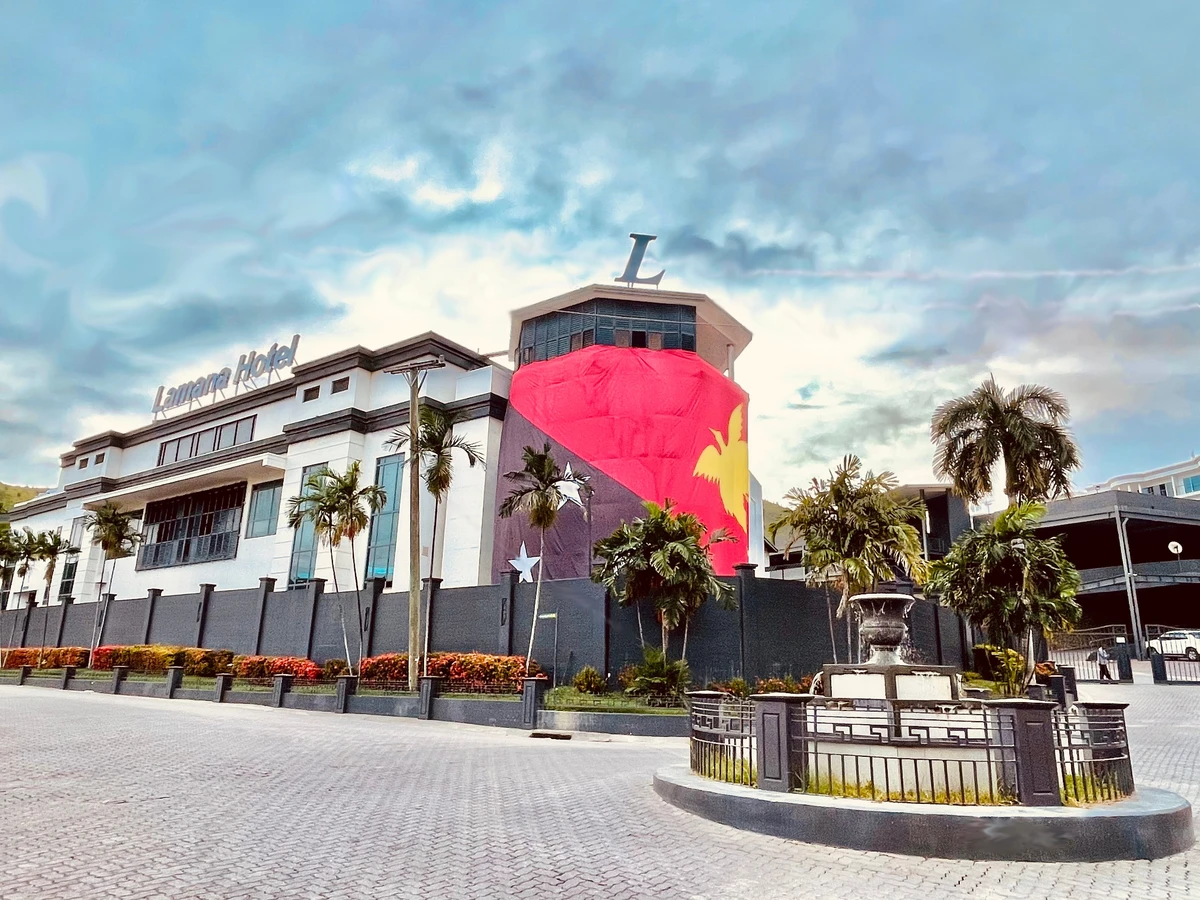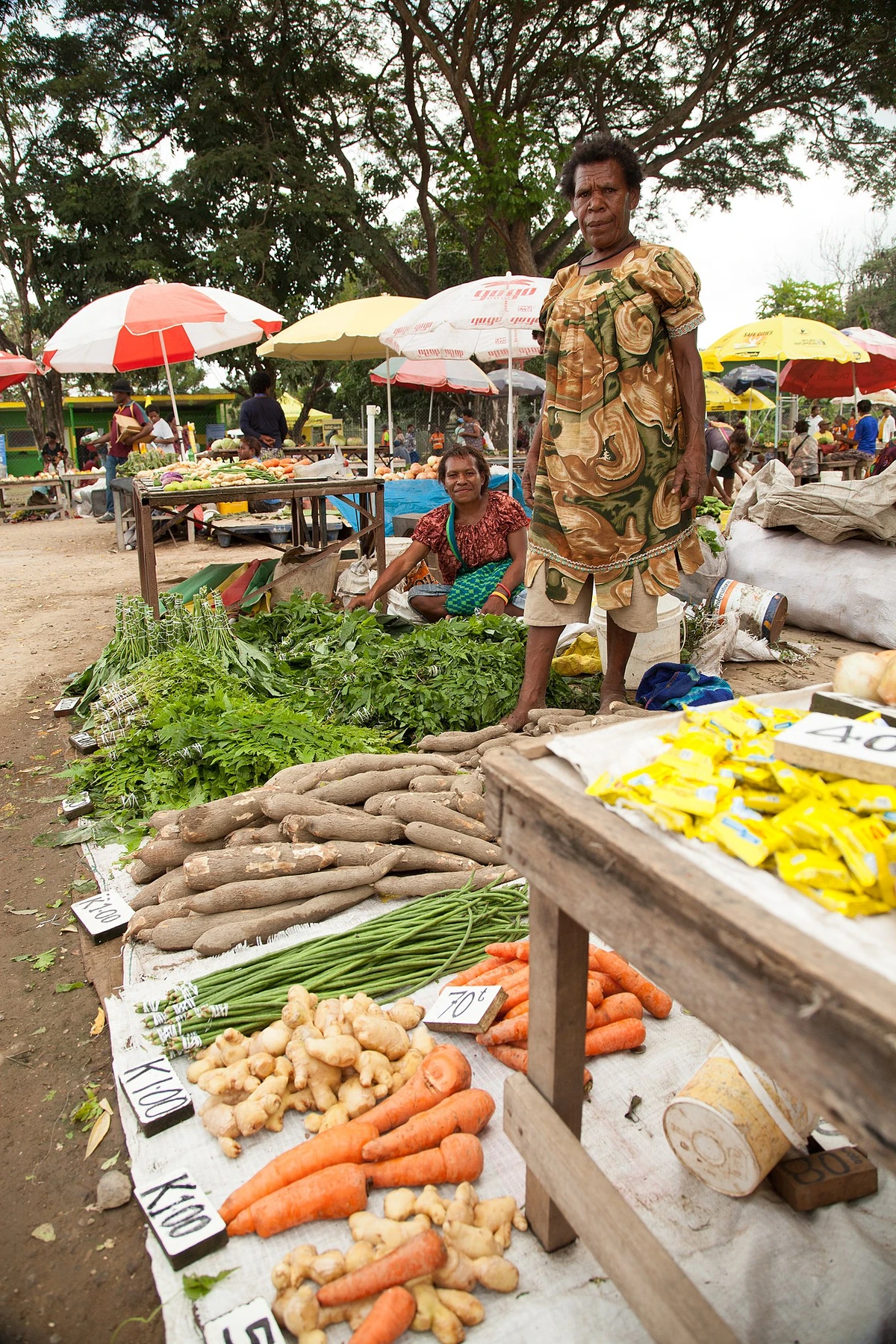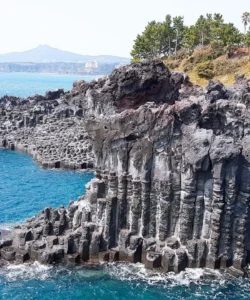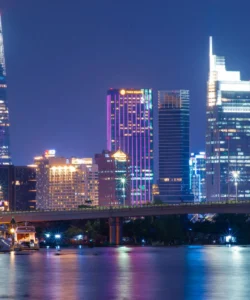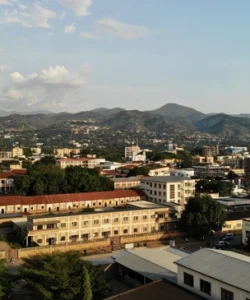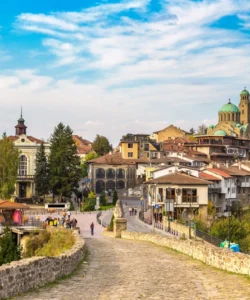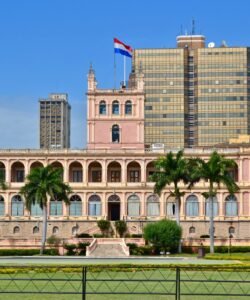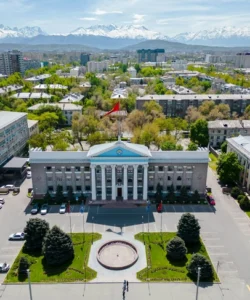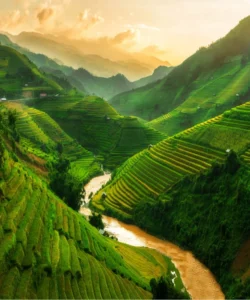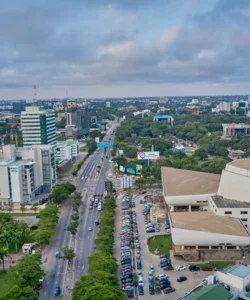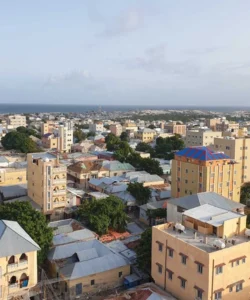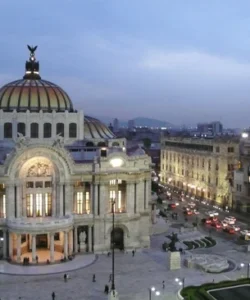Papua New Guinea (PNG) is an independent state in Oceania, occupying the eastern half of the island of New Guinea and numerous offshore islands. It’s renowned for its extraordinary cultural and biological diversity, rugged landscapes, and being one of the world’s least explored and most culturally diverse countries.
![]()
Here’s a comprehensive overview:
- Area: Approximately 462,840 km² (178,704 sq mi).
- Population: Estimated at around 10,741,411 people as of July 2025.
- Language: Papua New Guinea is one of the most linguistically diverse places on Earth, with over 800 indigenous languages. The official languages are English, Tok Pisin (a creole language, the most widely spoken lingua franca), and Hiri Motu.
- Currency: Papua New Guinean Kina (PGK).
- Religion: Predominantly Christian, with a majority being Protestant denominations. Traditional animist beliefs often coexist with Christian practices.
- Capital: Port Moresby.
- Major Cities/Towns: Port Moresby, Lae, Mount Hagen, Madang, Rabaul, Goroka.
Attractions & Wonders:
PNG’s attractions are largely based on its stunning natural environment, unique cultures, and adventurous opportunities. Tourism is still developing, and travel often requires specialized arrangements.
- Cultural Diversity (Sing-Sings): The most captivating aspect of PNG is its vibrant indigenous cultures. Annual cultural festivals called “Sing-Sings” (e.g., Goroka Show, Mount Hagen Show) are spectacular displays of tribal dress, song, and dance, where thousands of different tribes gather.
- Kokoda Track (Owen Stanley Range): A famous and challenging trekking route through the mountains, significant for its World War II history (battle between Australian and Japanese forces) and its demanding terrain through lush rainforest.
- Sepik River: One of the world’s great river systems, known for its unique tribal cultures, elaborate traditional art (especially carving), and incredible birdlife. River cruises offer a glimpse into remote village life.
- Mount Wilhelm: The highest peak in Oceania (4,509m / 14,793 ft), offering a challenging but rewarding climb through diverse ecosystems.
- Tari Basin (Huli Wigmen): Home to the Huli Wigmen, one of PNG’s most famous tribes, known for their elaborate ceremonial wigs made from their own hair and bird of paradise feathers. Cultural tours provide insights into their traditions.
- Rabaul (East New Britain): A town with a dramatic history of volcanic eruptions (especially from Mount Tavurvur, which frequently erupts ash). Visitors can explore Japanese WWII tunnels, visit hot springs, and witness volcanic activity from a safe distance.
- Underwater World: PNG offers world-class diving and snorkeling, particularly in areas like Kimbe Bay (New Britain), Madang, and Milne Bay. It’s known for pristine coral reefs, abundant marine life, and numerous World War II wrecks.
- Birdwatching: Home to a vast array of bird species, including numerous Birds of Paradise, making it a prime destination for ornithologists and birdwatchers.
- Lush Rainforests: Vast, largely untouched rainforests cover much of the country, providing incredible biodiversity and opportunities for eco-tourism.
Architecture:
PNG’s architecture is primarily defined by its diverse traditional tribal structures and, to a lesser extent, colonial and modern buildings.
- Traditional Houses (Haus Tambaran, Longhouses): Varies greatly by region and tribe.
- Haus Tambaran (Spirit Houses): Found in the Sepik region, these are elaborately decorated, towering ceremonial houses that serve as community centers and places for spiritual rituals.
- Longhouses: Communal dwellings, particularly in the highlands, designed to house extended families.
- Stilt Houses: Common in coastal and riverine areas, built on stilts to protect against floods and pests.
- Round Houses: Found in various regions, often with thatched roofs.
These structures are typically made from natural materials like timber, bamboo, sago palm leaves, and rattan, and are often adorned with intricate carvings, paintings, and traditional motifs.
- Colonial Buildings: In older towns like Port Moresby and Rabaul, you can find remnants of Australian colonial architecture, including government buildings and residences, often adapted for the tropical climate with verandas and louvers.
- Modern Structures (Port Moresby): The capital, Port Moresby, has seen some modern development, including government buildings, commercial centers, and hotels, but these are often functional rather than architecturally distinctive.
Roads:
Papua New Guinea’s road network is generally poor and undeveloped outside of major towns.
- Limited Network: Many parts of the country are only accessible by air or river.
- Poor Condition: Roads are often unsealed, badly maintained, and can become impassable during the rainy season. Landslides are also a risk.
- Safety Concerns: Road travel outside urban centers can be hazardous due to crime (“rascals”) and tribal conflicts. Convoy travel and local guides are often recommended or necessary.
- Highland Highway: The main artery connecting Lae to the Highlands, but it’s often in disrepair.
- No Cross-Country Driving: It’s not feasible to drive across the entire country. Most visitors rely on domestic flights, river transport, and local guides/drivers.
Hotels:
Accommodation in PNG ranges from international standard hotels in Port Moresby and a few other major towns to more basic guesthouses, lodges, and village stays, particularly for adventure tourism.
- Port Moresby:
- Hilton Port Moresby: A leading international hotel.
- Stanley Hotel & Suites: Another upscale option.
- Grand Papua Hotel: Offers good amenities.
- Regional Towns: Hotels are generally more modest.
- Eco-Lodges and Guesthouses: Common in remote areas catering to divers, birdwatchers, and trekkers. These often provide a more authentic experience but with basic facilities (e.g., Ambua Lodge in Tari, Karawari Lodge in the Sepik).
- Village Stays: Some tour operators arrange stays in traditional villages for an immersive cultural experience, which will be very basic.
Restaurants:
Papua New Guinea’s culinary scene is generally less developed than many tourist destinations, with a focus on local ingredients.
- Hotel Restaurants: In major hotels, you’ll find international cuisine (Western, Asian) and some local dishes.
- Local Eateries: In towns, there are local “kai bars” or roadside stalls serving simple, traditional meals.
- Fresh Produce: Markets are vibrant, offering fresh fruits, vegetables, and often roasted meats.
- No “Lolos”: This term is specific to French Caribbean islands; PNG has its own forms of local, informal food stalls.
Cuisine:
Papua New Guinean cuisine is varied due to the country’s immense cultural diversity, but it generally revolves around staple crops and available meats.
- Staple Foods: Root crops like taro, kaukau (sweet potato), yam, sago, and bananas (both cooking and eating varieties) are fundamental.
- Pork: A highly valued and common meat, especially for feasts.
- Mumu: A traditional cooking method where food (pork, chicken, root vegetables, bananas) is cooked slowly in an earth oven heated by hot stones, often wrapped in banana leaves. This is typically reserved for special occasions and communal meals.
- Fresh Seafood: Abundant in coastal and island regions, including various fish, prawns, and crabs.
- Kokoda: A common dish in coastal areas, similar to ceviche – raw fish marinated in lime juice or vinegar with coconut milk, onions, and chilies.
- Buai (Betel Nut): Not a food, but a widespread cultural stimulant chewed by many Papua New Guineans, often with lime powder and mustard stick.
- Green Vegetables: Various leafy greens, often cooked in coconut cream.
- Fruits: Wide variety of tropical fruits.
